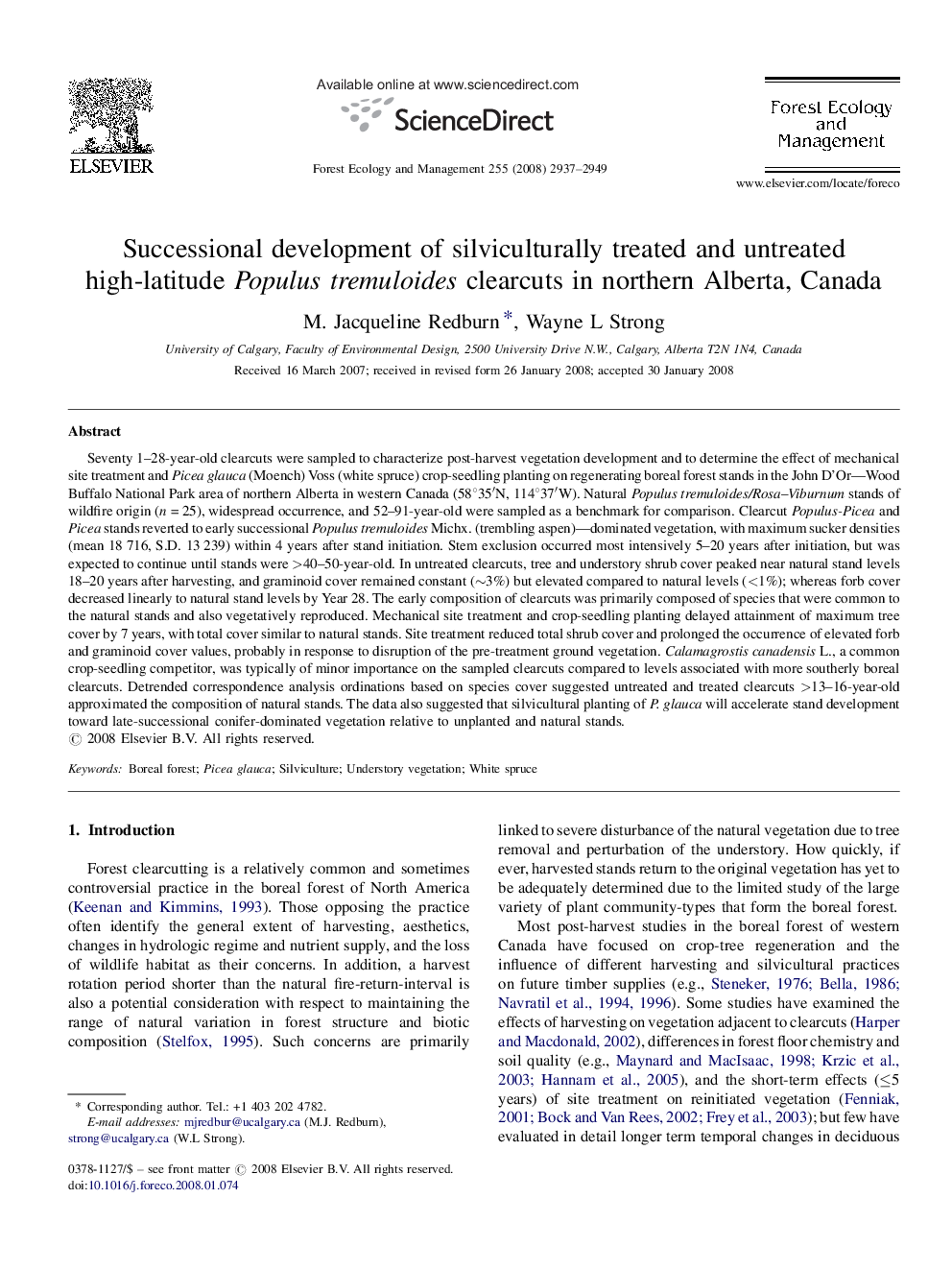| کد مقاله | کد نشریه | سال انتشار | مقاله انگلیسی | نسخه تمام متن |
|---|---|---|---|---|
| 89430 | 159340 | 2008 | 13 صفحه PDF | دانلود رایگان |

Seventy 1–28-year-old clearcuts were sampled to characterize post-harvest vegetation development and to determine the effect of mechanical site treatment and Picea glauca (Moench) Voss (white spruce) crop-seedling planting on regenerating boreal forest stands in the John D’Or—Wood Buffalo National Park area of northern Alberta in western Canada (58°35′N, 114°37′W). Natural Populus tremuloides/Rosa–Viburnum stands of wildfire origin (n = 25), widespread occurrence, and 52–91-year-old were sampled as a benchmark for comparison. Clearcut Populus-Picea and Picea stands reverted to early successional Populus tremuloides Michx. (trembling aspen)—dominated vegetation, with maximum sucker densities (mean 18 716, S.D. 13 239) within 4 years after stand initiation. Stem exclusion occurred most intensively 5–20 years after initiation, but was expected to continue until stands were >40–50-year-old. In untreated clearcuts, tree and understory shrub cover peaked near natural stand levels 18–20 years after harvesting, and graminoid cover remained constant (∼3%) but elevated compared to natural levels (<1%); whereas forb cover decreased linearly to natural stand levels by Year 28. The early composition of clearcuts was primarily composed of species that were common to the natural stands and also vegetatively reproduced. Mechanical site treatment and crop-seedling planting delayed attainment of maximum tree cover by 7 years, with total cover similar to natural stands. Site treatment reduced total shrub cover and prolonged the occurrence of elevated forb and graminoid cover values, probably in response to disruption of the pre-treatment ground vegetation. Calamagrostis canadensis L., a common crop-seedling competitor, was typically of minor importance on the sampled clearcuts compared to levels associated with more southerly boreal clearcuts. Detrended correspondence analysis ordinations based on species cover suggested untreated and treated clearcuts >13–16-year-old approximated the composition of natural stands. The data also suggested that silvicultural planting of P. glauca will accelerate stand development toward late-successional conifer-dominated vegetation relative to unplanted and natural stands.
Journal: Forest Ecology and Management - Volume 255, Issue 7, 20 April 2008, Pages 2937–2949